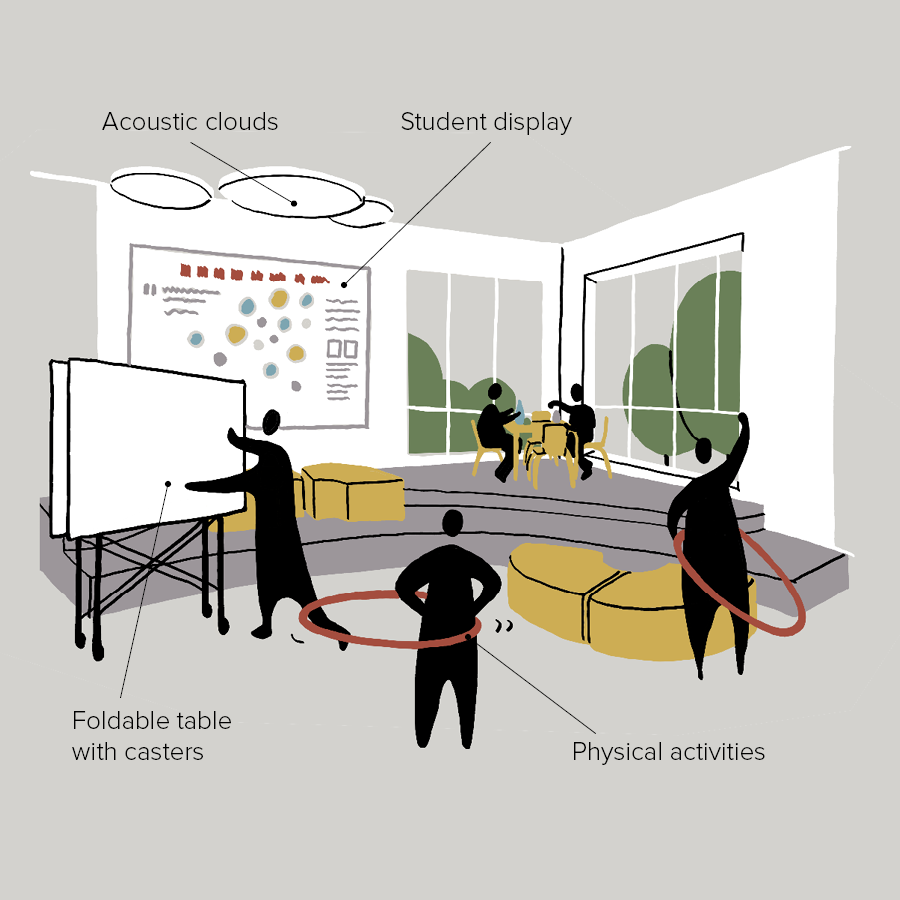
Whole-Body Learning
Whole-Body Learning
Problem
Research has shown that movement and physical activity improves cognitive functioning and has been correlated with improved academic performance and long-term retention of information. But, most conventional classrooms haven’t been designed with movement in mind.
Solution
To accommodate whole-body learning practices, it’s vital to create environments conducive to different types of movement and activity. Spatial characteristics that should be considered when designing for whole-body learning include acoustics (i.e. sound dampening for groups working within a larger communal space), materiality (e.g. carpeted area would be optimal for sound absorption, and better for exercises where some students are sitting or lying on the ground while hard flooring may be preferred for larger, upright movements), and amount of privacy (some students may want an audience, i.e. a stage or raised platform, while others want to be out of sight from their peers in a smaller, more enclosed space).
Related Patterns Learning Studio, Learning Commons, Learning Walls, Multiple Intelligences
View Image Gallery
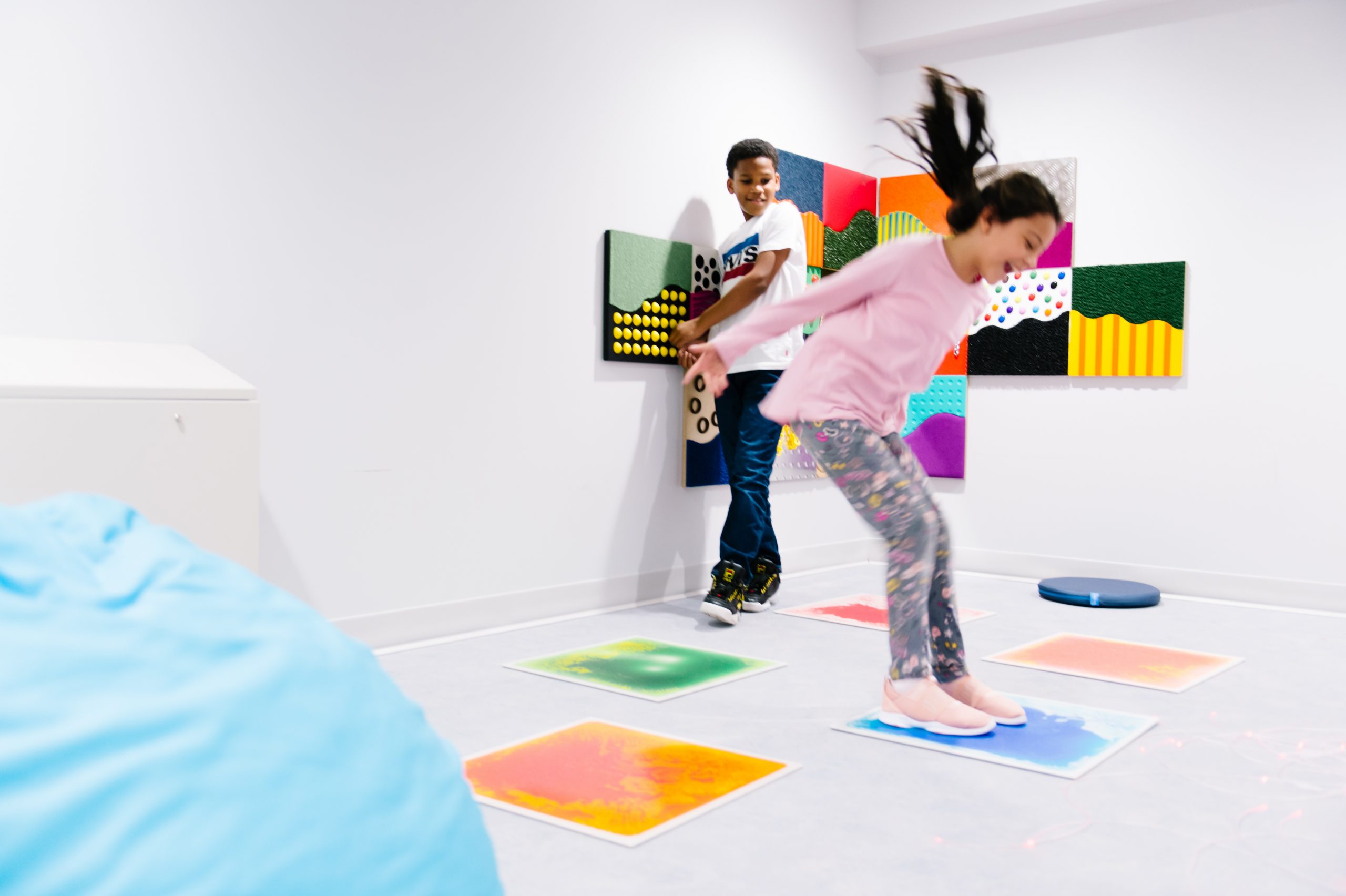

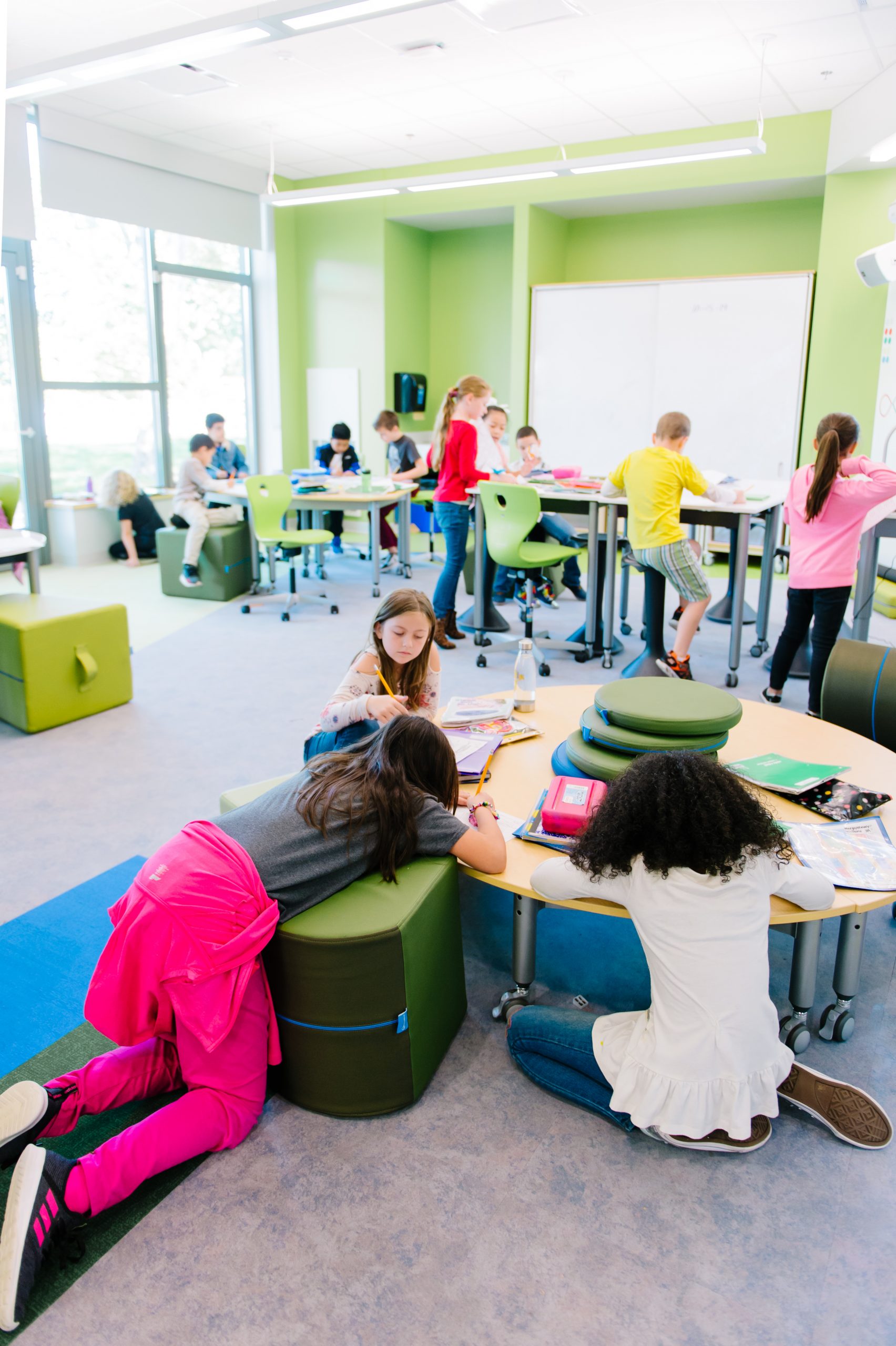
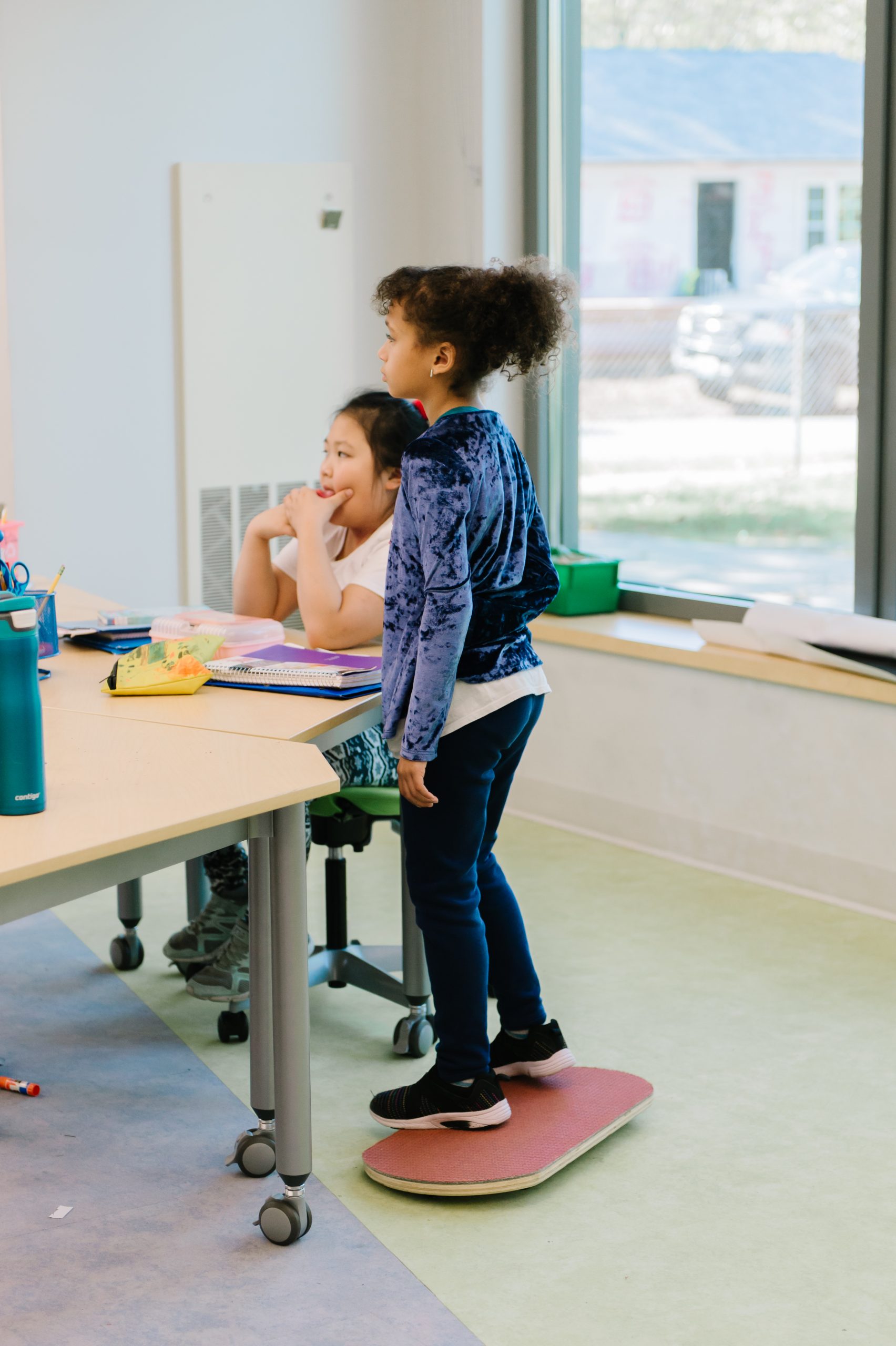

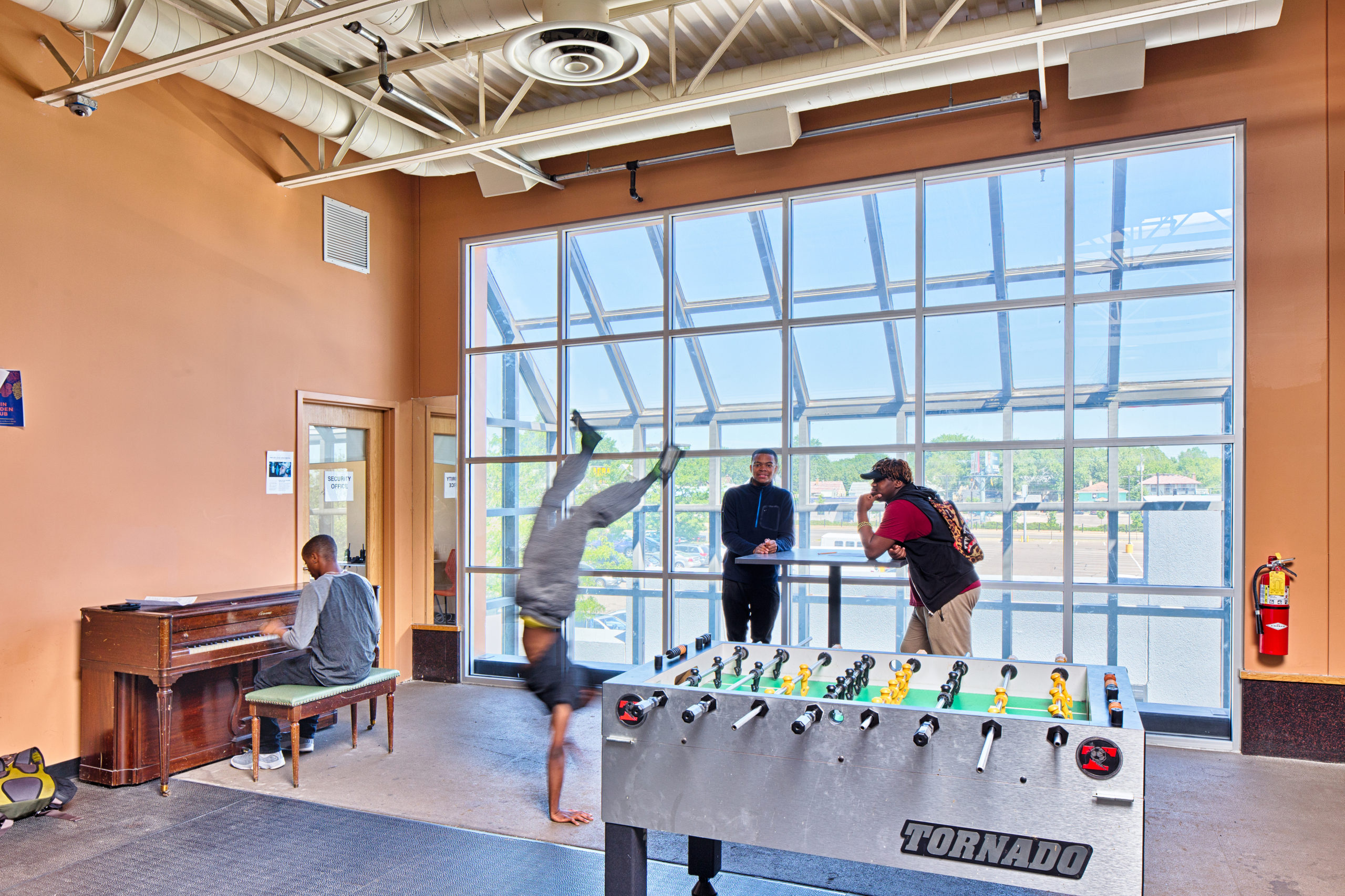


Learn More
- Smart Moves: Why Learning Is Not All in Your Head by Dr. Carla Hannaford
In this book, Neurophysiologist and educator Dr. Carla Hannaford examine the crucial role of movement and the body in learning.
- Math on the Move: Engaging Students in Whole Body Learning
This short video gives a preview of Malke Rosenfeld's framework for teaching math using the whole body.
- To Boost Learning, Just Add Movement
This article and podcast provide numerous resources and examples of whole-body learning in action.
- Malke Rosenfeld
This website contains resources for educators interested in incorporating whole-body math into their teaching practices.


